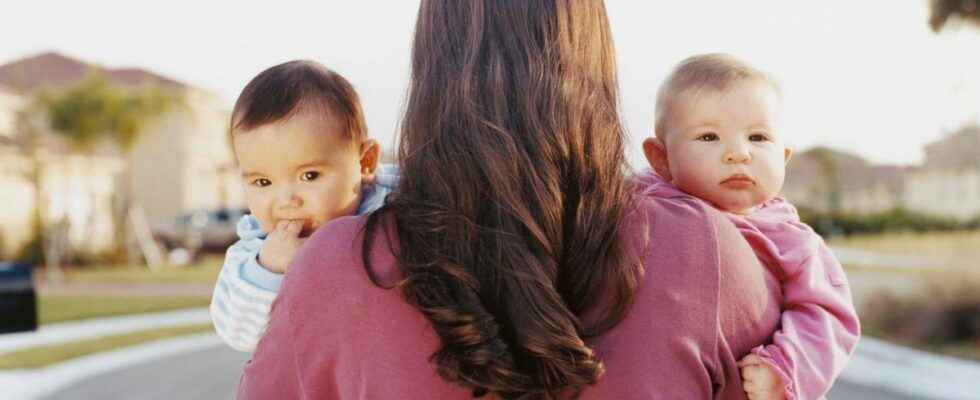Published on
Updated
Reading 3 mins.
A young English girl gave birth to two very different twins. And for good reason, each one developed in a different uterus. This rare double uterus situation is called “didelphic uterus”.
Two wombs for one pregnancy
Twins, but not completely… According to a story told by The Mirror, in 2018, Jade Buckingham, a young woman then aged 23, gave birth to Lanaé and Lavell, two adorable twins with very different skin tones. One turned out to be very dark and dark-skinned when her brother was a blond baby with a fair complexion.
Are Lanaé and Lavelle simple dizygotic twins (also called fraternal twins)? The answer is even rarer: not only are the two children, indeed, from two different eggs, but in the case of Jade Buckingham, they also grew up in two different wombs. The young woman had known since she was 17 that she had a double uterus, also called the didelphe uterus.
A rare anomaly, which generally complicates the chances of conceiving a child. Having twins was therefore unexpected for this young woman who was already the mother of a first child.
“I was very excited and at the same time I was scared because of my condition and the miscarriages I had already suffered (…) It was worrying to know them in two different wombs”.
Despite everything, the two children were born in full health at 34 weeks, in April 2018, and have been doing well since.
What is a didelphic uterus?
A didelphic uterus, formerly called a bicornuate uterus, is a rare malformation of the uterus that affects approximately 2% of women. Anatomically, the didelpheus uterus is in double form, so two uteri. The vagina can be normal or double as well. The didelphic uterus is usually identified with an ultrasound or x-ray of the uterus (hysterography), but may go undetected for years. The woman doesn’t feel anything in particular.
The anomaly has its origin during the development of the fetus: when the female genital tract is still in the form of tubes called Müller’s ducts. These must then merge to form the uterus, cervix and vagina. It happens that fusion is carried out badly, the uterus then retains a double shape and the woman will also sometimes have two vaginas.
More difficult pregnancies
This anomaly is generally responsible, in adolescents, for symptoms such as dysmenorrhea (painful menstruation), metrorrhagia (bleeding that occurs outside of menstruation or in the absence of menstruation after menopause or before puberty), pathological leucorrhoea (flow non-bloody vaginas). Nevertheless, the anomaly complicates the fact of conceiving a child. For a pregnancy to take place, there must be enough space in the uterus as well as good uterine mucus. However, in the case of a didelphic uterus, the egg lacks space and has difficulty clinging to the mucous membrane.. Late miscarriages are common. When possible, an operation can be proposed.
Twin pregnancies with sometimes two deliveries
A pregnancy on a didelphic uterus can result in the presence of a fetus in each of the uterine cavities. In this case, everything happens as if it were two separate pregnancies, each uterus contracting independently of each other.
A twin pregnancy in a woman with a didelphic uterus is a very rare event. We have one in a million pregnancies, approximately. The first case was described in 1927. To date, we only count about twenty cases of twin pregnancies on didelphe uterus in the medical literature.
Finally, knowing that each uterus is independent, some of these twin pregnancies can give rise to deliveries in two stages. In Bangladesh in April 2019, a woman gave birth to twins 26 days apart. In Kazahkstan, a young woman had even given birth to her second child three months after the first.
Ultrasounds to identify these rare cases
If it’s a happy ending for this young couple, this anecdote reminds us of the importance of regular monitoring during pregnancy. Ultrasounds, to be done throughout pregnancy (every 3 months), make it possible to monitor the development of the fetus and to detect the occurrence of a disability, malformation or trisomy 21.
The first ultrasound is mandatory and takes place around 12 weeks of amenorrhea. For the 2nd trimester ultrasound and the 3rd trimester ultrasound, it will be necessary to wait respectively for the 22nd then the 32nd week of amenorrhea. These examinations are painless and partly covered by Social Security.
